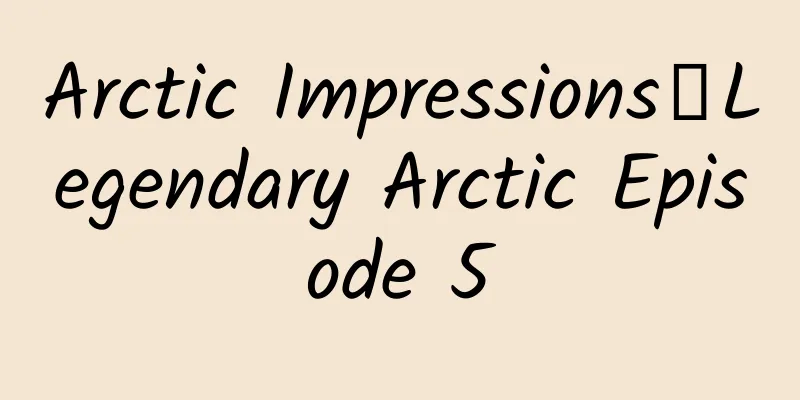Arctic Impressions丨Legendary Arctic Episode 5

|
People call the Earth the "blue planet" because the ocean accounts for a high proportion of the Earth's surface. More than 70% of the Earth's surface is covered by blue sea water. If you look at the Earth from outer space, it will appear to be a blue planet, which is very beautiful, so the Earth is called the "blue planet." Geologists have now proposed the "Snowball Earth" theory. According to the "Snowball Earth" hypothesis, the Earth we live on has been completely covered by ice three times in its 4.6 billion years of history. At that time, the Earth was not the familiar blue "water planet", but a snowy white "ice planet". You may think this is just a magnificent and bizarre science fiction story, right? Scientists have enough evidence to show that such an unimaginable event may have really happened in the real world. So, how did this amazing hypothesis come about? The "Water Planet" evolved from the "Ice Planet" The first global freeze occurred during the Huronian Ice Age (2.3 billion to 2.22 billion years ago). Few strata were preserved during that period, so research was extremely difficult. So some scholars proposed that the birth of a photosynthetic algae called "cyanobacteria" had a lot to do with the reduction of greenhouse gases at that time. When the earth was first formed, there was almost no oxygen in the atmosphere. About 2.7 billion years ago, cyanobacteria appeared on the earth, large-scale photosynthesis began, and oxygen gradually appeared in the atmosphere. Oxygen can decompose methane (a type of greenhouse gas) in the atmosphere to form the same amount of carbon dioxide. However, the greenhouse effect of carbon dioxide is only about 1/24 of that of methane, so the earth began to gradually cool. The second global freeze occurred 1 billion years after the first, and the second Sturtian Ice Age (720 million to 663 million years ago, known as the Chang'an Ice Age and the Gucheng Ice Age in China) lasted about 57 million years. The second and third ice ages are collectively referred to as the Neoproterozoic Glacial Age. The difference between the two ice ages and the reason why the Earth entered a global freeze again in a short period of time have not yet been explored. A global freeze is likely to have a very important significance for the increase in oxygen concentration in the atmosphere and even for the evolution of life. Some people may ask, is it possible for the Earth to freeze globally again? Scholars generally believe that this is unlikely, at least the Earth is more difficult to freeze than in the past. The Earth's temperature depends largely on the amount of solar radiation it receives, and the energy that can reach the Earth from solar radiation today is 6% higher than during the global freeze period 600 million years ago. In other words, the solar radiation reaching the Earth has increased compared to the past, so the Earth is more difficult to freeze than in the past. The poles we mentioned today may be the "fetal tracks" left by the "Ice Planet" during the global freeze period. Author: Yu Chun Graduated from Tsinghua University with a major in automatic control, and studied modern literature at the Graduate School of Sun Yat-sen University. He was the editor-in-chief, editor, colonel, and fourth-level professional and technical personnel of the "Navy Equipment" magazine; a director of the Third China Periodical Association, a member of the Guangdong Writers Association, a visiting professor at the Naval Command College, a naval flight safety management expert, a weapons and equipment management expert, and a senior editor. He has been committed to literary creation, writing scientific and technological articles, holding special lectures, and engaging in the development and research of weapons and equipment, especially in the field of risk management research of high-tech equipment. His published works cover multiple fields of literature and science and technology. He has won more than 20 literary creation awards and military science and technology progress awards inside and outside the military, and has been named an advanced publishing worker of the Navy three times, and has been awarded the third-class merit three times. |
<<: Are "cold fireworks" fireworks? How dangerous are they?
>>: There are bite marks on the shit. Who is so hungry?
Recommend
We have been drinking coconut flakes in milk tea for so many years. Is it really made of coconut?
If you love milk tea, you must be familiar with t...
iOS 16.2 quasi-official version released, karaoke function is here
Early this morning, Apple pushed the iOS 16.2 RC ...
What is the purpose of following hot topics and taking advantage of trends every day?
Now when it comes to chasing hot topics and lever...
Always want to "stick it"? Most likely you have skin hunger syndrome
Why do I always want to stick close to others? So...
How to get more recommendations on self-media platforms?
This article will talk to you about the article r...
China’s latest cancer report is released. What key information has it “revealed”?
Not long ago, Academician He Jie's team publi...
Douyin dou+ advertising strategy!
Recently a friend told me that it is not easy to ...
6 ways to ignite the 2022 Spring Festival marketing!
2021 is finally over! However, the annual brand S...
Interesting story | Humans evolved from ancient apes, so do monkeys have the chance to evolve into humans?
About 65 million years ago, a large meteorite hit...
The fusion of brand advertising and performance advertising!
There is a logic that says that we should use the...
From ad images to landing pages, 14 tips to improve conversions
This article is a summary of the book "The B...
7-year-old boy went to hospital after playing games and crossing eyes? Be careful with this kind of behavior in children!
In an era when electronic products are becoming i...
Use of global variables and local variables in Android
As the name implies, global variables are variabl...
Does brand upgrading mean changing the logo?
Brand upgrading is not as simple as changing a lo...
What kind of market is e-sports that even Wang Sicong is attracted to?
On the afternoon of May 11, it was pouring rain i...









